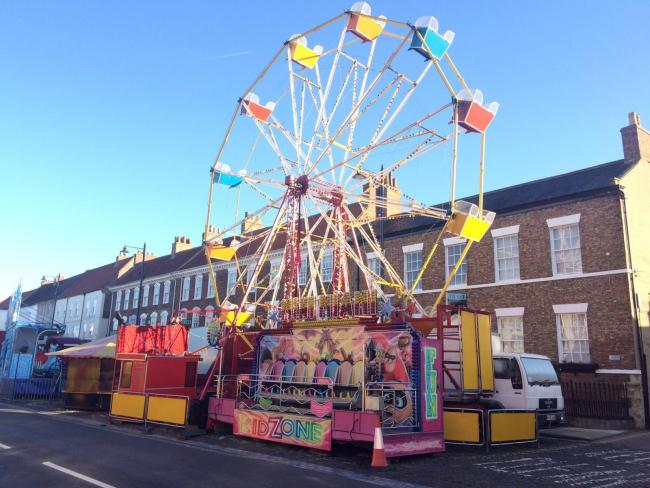
TWO big health and safety stories have made the front of The Northern Echo over the last few weeks – the complete closure of roads in Yarm for the town fair because of terrorism concerns, and potential changes to the Santa Tours in Newton Aycliffe over fears the event was in breach of traffic regulations. Both led to the usual “health and safety gone mad” accusations being thrown at organisers.

RIDES: Yarm Fair has taken over the town centre for the annual event
How likely is it that terrorists would hit a relatively small, provincial event like Yarm Fair was one question posed in our pages. An impossible question to answer, but recent, tragic history shows us that anywhere can become a target. If a suicide bomber can carry out mass-murder at a pop concert on a Monday night in Manchester, then anything is possible.
Sadly, because of horrors like this, anyone organising an event of any size now has to spend a large amount of time working out how to prevent the worst from happening. This naturally causes inconvenience to a wider group of people, but if that is the price of security, then so be it.
Assessing risk is not just about terrorism of course – there are a whole host of other, more mundane issues to take into consideration. The Aycliffe Santa Tours row is about how to keep the event in its current format, while staying within the law and the requirements of the council’s insurance. It’s a classic debate between the importance of maintaining a much-loved tradition and the bureaucratic pressures placed on modern organisations.
Is the council right to look again at the event to make sure it is as risk-free as possible and completely legal? Absolutely. Could it have handled the furore better? Probably, yes.
AS much as they make for interesting news stories, health and safety debates like this intrigue me because I am responsible for a fair amount of risk assessing in my role as secretary of my local hockey club. We have safety tick lists for our junior training (no loose balls, first aid kit present, emergency gate unlocked, mobile phone to hand), risk assessments for moving goals at senior games (minimum of four people to help, one at each corner, no under 18s) and a spreadsheet for when we hold our annual coffee morning fundraiser (table service for hot drinks, slippy floor sign ready, evacuation procedure communicated).
Playing hockey itself is a risky business. I wish I could have risk assessed the danger of the ball which split my chin open, or the stick which broke my finger – twice (two different occasions, same finger). We encourage our players to take responsibility for their own personal safety, and while we clearly can’t eliminate 100 per cent of the risk, we do our best to make sure we have the right procedures in place for when an injury or incident does happen.
Multiply up the kind of preparation we do as a small club in line with the scale of bigger organisations or events, and you get an idea of the size of the task. It’s a job we do not because we like filling in forms, but because we want our members, volunteers and guests to be secure at our events. Is this health and safety gone mad? Or just a responsible approach to public safety.



Comments: Our rules
We want our comments to be a lively and valuable part of our community - a place where readers can debate and engage with the most important local issues. The ability to comment on our stories is a privilege, not a right, however, and that privilege may be withdrawn if it is abused or misused.
Please report any comments that break our rules.
Read the rules hereLast Updated:
Report this comment Cancel